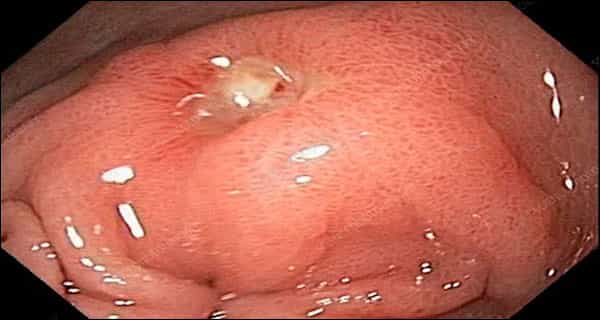Difference between upper & lower GI bleed, What is upper GI bleed? The term upper GI bleed means bleeding that originates in the upper alimentary tract, such as the esophagus, stomach, or duodenum, the first portion of the small intestine. Bleeding might be due to an ulcer or any other reason.
The cause of Upper GI bleeding may be ulcers of the lining of the esophagus, stomach, or duodenum. The patient may vomit bright red color blood or dark color flecks or coffee color.
On the other hand lower GI bleed occurs in the jejunum, ileum two parts of the small intestine, large intestine, sigmoid colon, rectum, and anus. Bleed might be due to an ulcer or many other reasons such as irritation by cuts, polyps, bacterial infection, or inflammation of the large intestine. Bright red color or maroon color stool is the symptom of bleeding that occurs in the large intestine or near rectum or anus. It might be due to ulcers or piles.
What are the symptoms of GI bleed?
The symptoms of GI bleed are
- Bright red vomiting
- Black and shiny stool
- Patient may feel Cramps in stomach and severe stomach pain
- Pale yellow skin color
- Feeling tired and patient may got faint
- Feeling weakness
Acute GI bleed, either it may be of the upper part or lower part, both are very serious in nature, and needs immediate medical help. Delay in medical aid leads to very serious consequences, such as,
- High pulse rate
- Instant drop in blood pressure
- No urination
- Patient become unconscious In chronic cases of GI bleed slower bleed may remain long period and may subside automatically, but in such cases, anemia may occur.
What are the causes of upper GI bleed?
1. Peptic ulcer
The sores develop on the lining of the stomach or duodenum, due to infection of H.pylori, intake of NSAIDs. It may cause pain, nausea, vomiting, and bloating.
2. Inflammation in the esophagus
The inflammation of the esophagus occurs due to medication, allergy, or infection. The patient may feel pain in the chest, difficulty in swallowing, nausea, cough.
3. Infection in the small intestine
Inflammation occurs in the small intestine due to viral or bacterial infection of the small intestine. The patient may feel bloating, nausea, diarrhea, cramping, and bleeding from the rectal.
4. Enlargement of varices at the lower part of the esophagus
It may pass without any symptoms. In serious conditions, bleeding may start. Pain in the stomach, bloody black stool, and vomiting are the common symptoms.
5. Cancer in upper GI or lower GI
Cancer may be the cause of both bleeds. The patient may feel difficulty in swallowing, cough, and vomiting, diarrhea, bloating.
How to diagnose?
After physical examination, conversation with the patient, the gastroenterologist may advice stool tests, blood tests, endoscopy, barium meal x-ray or barium enema x-ray, MRI or CT scan, sigmoid scopy, and colonoscopy as per the condition of the patient and detect the cause of illness.
What is the treatment?
The gastro-entrologist may treat the case as per the condition of the case. He may treat the case by medication, injection or refer the case to a surgeon for further treatment according to symptoms, condition of the patient.
| Can bronchitis affect your digestive system? | Click Here |
| Large intestine function in the digestive system | Click Here |
| Pharynx function in the digestive system | Click Here |
| Mouth function in the digestive system | Click Here |
| Gastric and duodenal ulcers | Click Here |
| Old age comes early because of these 10 reasons | Click Here |
Frequently Asked Question About Difference between upper & lower GI bleed
Q. Distinguish the difference between upper and lower GI bleed?
Ans. In upper GI bleed, bleeding occurs from the esophagus, stomach, or from the duodenum. In lower GI bleed it originates from a site distal to the ligament of Treitz.
Q. What do you mean by upper GI and lower GI?
Ans. The upper GI includes the mouth, esophagus, stomach, and the first part of the small intestine i.e. duodenum. The lower GI tract starts from the 2nd part of the small intestine, 3rd part of the small intestine, large intestine, sigmoid colon, rectum, and anus.
Q. How can you diagnose infection of lower GI?
Ans. Sigmoid scope, colonoscopy, CT scan, and MRI plays an important role to detect the cause and place of infection.
